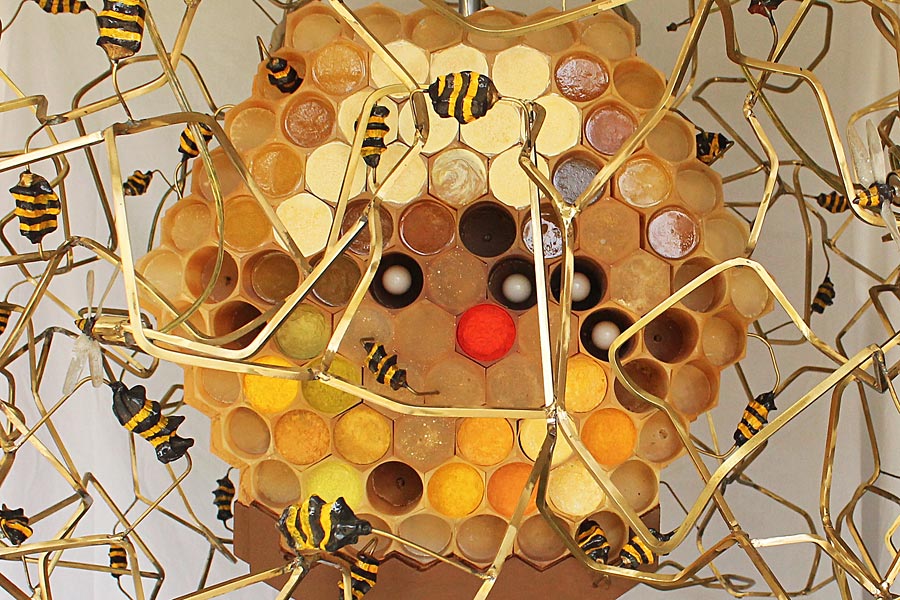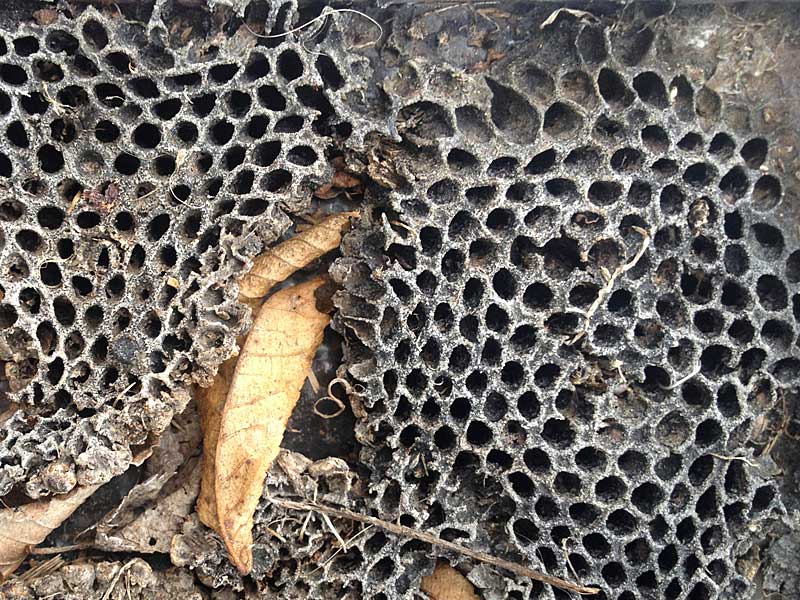Detail of "The Beekeeper," 2015. Kinetic sculpture made with steel, cast resin, brass, electronics, wood and paint. Approximate dimensions are 60"(W) x 132" (H). Kelly Heaton
I am pleased to announce that my latest body of work, "Pollination," will open on September 12 at Ronald Feldman Fine Arts, 31 Mercer Street, NYC. The show addresses many facets of pollination as a fertile exchange, including bees, commerce, human relationships, spirituality and technology. Works include large-scale sculpture, kinetic sculpture, works on paper and perfume. A public reception will be hosted at the gallery on September 12 from 6 - 8pm. The show runs through October 24.
For more information, please sign up for my mailing list or contact Ronald Feldman Fine Arts: (212) 226-3232.





























